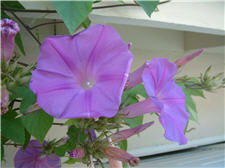- Basic Watering Information
- General Tips
- Watering Device Types
- Common Irrigation Challenges
- Sample Irrigation Schedules


General Tips
Less is More - More damage is caused to our plants and grass from over-watering than from under-watering. When setting up your schedules be conservative to start and add more time when plants begin to look stressed.
Losing its Spring - Grass signals that it needs water by losing its spring: When you walk across the lawn and see your footprints, your lawn probably needs to be watered.
Grass Height - Set your mower to one of the highest settings. There are several reasons not to cut your grass too short:
Keeping grass longer allows it greater surface area to carry out photosynthesis, which in turn results in healthier plants. In addition, taller grass grows slower than shorter grass. You can use this fact to eliminate up to 20 percent of the mowing you do annually—an average savings of about eight hours a year, not to mention the savings of gasoline and wear on equipment.
By keeping your grass at the upper end of its recommended mowing height, you can prevent most weeds from germinating—and thereby eliminate the need for herbicides.
Take Control - Weather-based irrigation controllers (wbic) are a great way to automate seasonal irrigation adjustments Before purchasing any irrigation controller, make sure it can be set for your water agency outdoor watering schedule. Daylight savings time is a good reminder to change the battery in your controller Rebates for these devices may be available through your water retailer.
Fall Irrigation - In the Fresno Region, September through November, temperatures may still be relatively hot and your plants may seem to require similar watering patterns to the summer. However, keep in mind that as the days become shorter, evaporation decreases and plants' water needs drop by approximately 50%.
Next - Watering Device Types